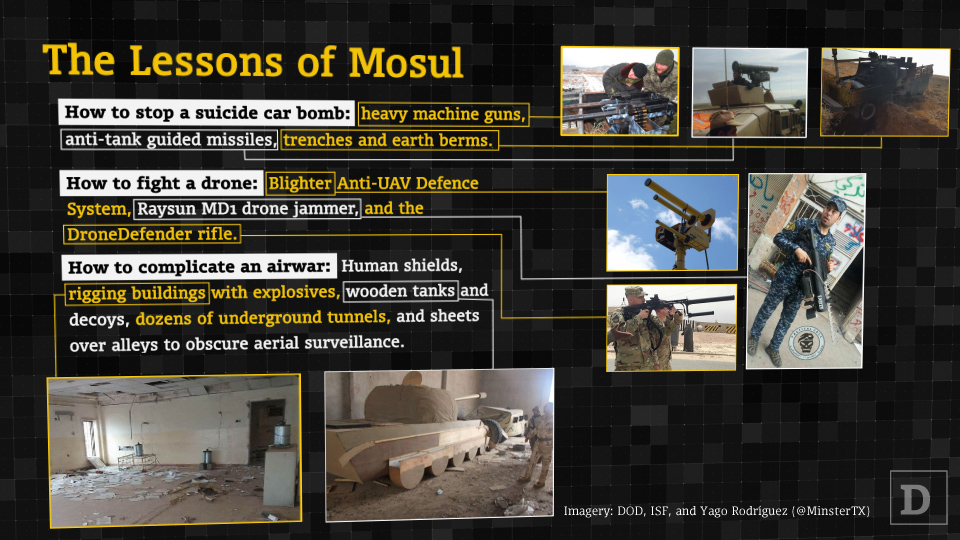https://specialtactics.me/home/2017/7/23/high-intensity-urban-combat-tactics-xbe8n-n3ra7
High-Intensity Urban Combat Tactics
CLOSE QUARTERS BATTLE,
COMBINED ARMS
How must urban combat tactics change if the United States and its allies find themselves in a high-intensity conventional war against a modern, combined arms force like Russia, China or North Korea? This is one of the questions that our new
Squad-Level Military Urban Combat manual intends to answer. While many tactics and general principles will remain the same, there are some very important differences between high-intensity conventional urban combat and the sort of precision Close Quarters Battle (CQB) that the U.S. military has grown accustomed to practicing over the past seventeen years.
Modern military doctrine for CQB and Military Operations in Urban Terrain (MOUT) traces its origin to hostage rescue tactics. Beginning with the British 22nd Special Air Service Regiment (SAS), counterterrorist units became the experts in room clearing and CQB. Because their focus was hostage rescue, their tactics demanded a very high degree of precision and target discrimination.
After September 11, 2001, the United States and its allies found themselves embroiled in numerous counterinsurgency and low-intensity conflicts around the globe. Because these conflicts also demanded tactics that focused on precision and target discrimination, conventional military units were able to adapt counterterrorist CQB tactics to the new battlefield. However, in the event of a conventional war, urban tactics may need to evolve once again. Below are six critical factors that military units will need to consider when preparing for high-intensity conventional urban combat:
1) Greater Freedom for Heavy Weapons and Firepower: In a combined-arms urban fight (like Stalingrad or Aachen in World War II) civilians will probably have either evacuated the area or will be doing everything they can to stay out of the way. This will provide military commanders on both sides much more freedom in their application of heavy weapons and firepower. Tactics like tossing fragmentation grenades through windows, firing machineguns through walls and using airburst artillery to clear rooftops will suddenly become both acceptable and necessary. Units that have spent the past seventeen years learning to restrain their use of firepower, will have to break the habit quickly.
2) Increased Danger for Room and Building Clearing: When facing an adversary armed with machineguns, mines, booby traps, high explosives and artillery, the task of clearing an enemy-held room or building becomes much more dangerous. A platoon or company-sized element might clear a building successfully, only to die in a massive explosion as the enemy detonates pre-positioned demolition charges, bringing the entire building down. In many cases, units will want to avoid going into a room or building at all and instead use firepower to neutralize threats from a distance.
3) Effects of Building Damage and Rubble: The intense employment of machineguns, artillery and explosives will greatly change the urban landscape. Military units used to clearing normal rooms in a counterinsurgency fight will be surprised when they open a door and almost fall multiple stories down because half of the building is gone. Buildings may be damaged, unstable, on fire, or filled with smoke. When buildings are completely destroyed, the tangled mass of rubble can provide even more effective defensive positions. Military units might benefit from talking with firefighters about how to move and operate in heavily damaged buildings.
4) Mouse-holes and New Clearing Challenges: Enemy defensive measures will make the urban terrain even more complex. Enemies might create holes in the floor so they can drop grenades into the rooms below or cut holes in the walls to use as firing/observation ports. Enemies might booby-trap stairwells or rip out the stairs completely and instead rely on retractable rope ladders. Both sides will also avoid using doors if possible and instead use explosives, heavy shells or armored vehicles to “mouse-hole” through walls. Military units might want to study World War II battles to relearn many “dirty tricks” of urban combat that have not been used for decades.
5) Increased Importance of Underground Combat: Sewers and subway tunnels will become much more important in conventional urban warfare since they offer hidden routes to move around the city without being exposed to direct fire and artillery. However, these narrow passages can also become deathtraps if the enemy clears them using explosives or flamethrowers. Both sides will need to learn new techniques for fighting and surviving underground.
6) Dramatic Increase in Casualties: Casualties in an urban fight are typically very high. Units must prepare mentally, physically and tactically to absorb a large number of casualties and keep fighting. More importantly, the next high-intensity urban fight will probably be the first one where combatants on both sides will wear highly effective, modern body armor. This will save more lives but it may also mean that a much higher percentage of casualties will be wounded (WIA) as opposed to killed (KIA). A large number of WIA presents a far more difficult logistical challenge for evacuation than an equal number of KIA. Military forces might need to reorganize and augment their MEDEVAC and medical treatment capabilities to deal with numbers of WIA that could exceed any historical precedent.
The six points above are only a few of the many new urban warfare challenges that will emerge in the event of a high-intensity conventional conflict. While continuing to practice their current tactics for low-intensity conflict, military units should also start thinking about how they will fight against an enemy like Russia, China or North Korea. Our upcoming
Squad-Level Military Urban Combat manual should take a first step in the right direction, since it addresses both low-intensity precision tactics and high-intensity conventional tactics.



